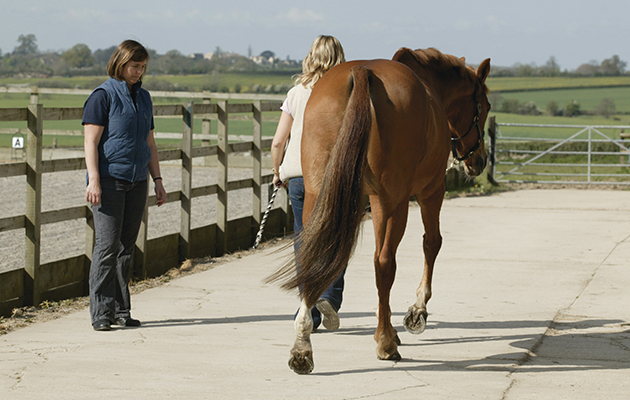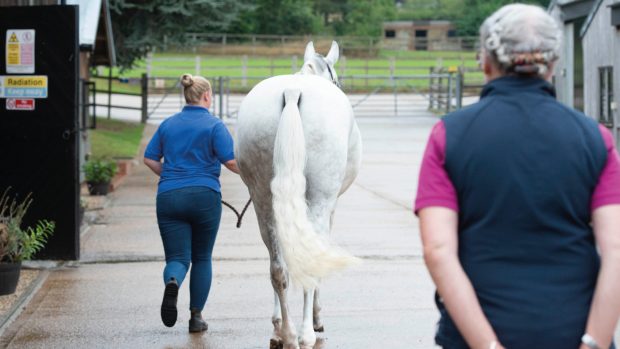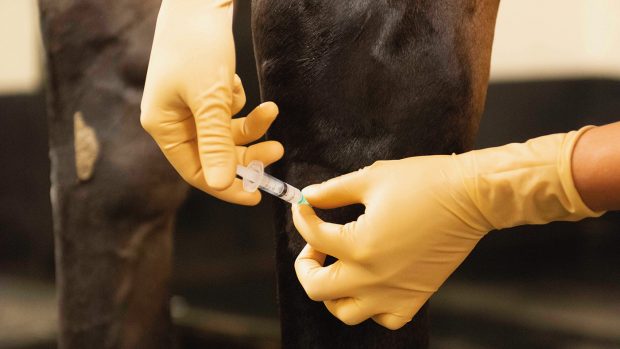This year the Animal Health Trust celebrates its 75th anniversary. To mark the occasion we meet Lula — one of the charity's recent success stories
The case
Suspensory ligament injuries, although manageable, can limit and even end a horse’s competitive career. Horses in all disciplines are at risk of overloading and causing repetitive strain injuries to this structure, but dressage will see a much higher prevalence due to the nature of the movements and training regimes.
In 2014 almost 60% of horses referred to the Animal Health Trust (AHT) equine clinic with mystery lameness or poor performance problems, were suffering from suspensory ligament injuries.
Lula is one of these patients. She was first referred to the equine clinic in October 2015 after displaying some very out of character behaviour. When competing at dressage in the spring Lula reared during the test, which she had never done before and this was Eleanor’s first sign that something wasn’t quite right.
Through the summer Lula’s behaviour became more unpredictable at competitions and at home and Eleanor lost her confidence in their partnership. After checking Lula’s teeth, tack and feet to see what was causing these outbursts, she was referred by their vet to the Animal Health Trust (AHT), suspecting that there was an underlying pain-related problem.
The treatment
At the AHT Lula was assessed on the lunge and ridden and showed a reluctance to go forwards and a low-grade lameness in both hindlimbs. She was nerve blocked in her hindlimbs to pin point where the pain causing lameness was originating from.
The AHT Head of Equine Orthopaedics, Dr Sue Dyson, found blocking just below the back of the hock substantially improved Lula’s gait. Having identified the problem area, further ultrasonographic investigation confirmed there was proximal suspensory desmopathy (damage to the suspensory ligament) in both hindlimbs.
This is a very common injury that AHT clinicians see in performance horses and treat on a regular basis.
Lula was recommended for a neurectomy and fasciotomy. This involves detaching the nerve that triggers movement of the ligament which is causing pain. It also involves an incision into the band of tissue (fascia) which effectively squashes the ligament between the back of the cannon bone and the splint bones.
Sue was confident in Lula being a good candidate for the surgery, which would potentially give Eleanor and Lula a much needed positive step towards a better competitive future. “Approximately 76% of horses with primary proximal suspensory desmopathy are able to return to full athletic function for a minimum of two years,” says Sue.
Continued below…
Like this? You may also enjoy reading these articles…
Almost half of "sound" sport horses in a
H&H's Rachael Turner is among the runners donning

Riders struggling to spot lameness *H&H VIP*

Marathon aim for equestrian fundraisers
The outcome
Lula made good post-operative progress and Eleanor had a strict rehabilitation plan to follow at home, giving the two of them time to build their relationship again.
Over a year on, and the pair have gone from strength to strength.
Eleanor’s mother Mary is thrilled. “We took her rehabilitation slowly and Eleanor spent nearly six months doing a lot of groundwork, re-building the trust she had lost when Lula had been reacting to her discomfort,” she says. “Our patience has paid off and Lula and Eleanor are enjoying their ridden work together again.
“They are now both at Hartpury College where Eleanor is studying equine science with a particular interest in rehabilitation and therapies. It has been an invaluable learning experience for Eleanor. She is so pleased to have persevered and to be able to trust and enjoy her horse again.”
The Animal Health Trust will be celebrating its 75th anniversary with a variety of events this year. Visit www.aht.org.uk to find out more



